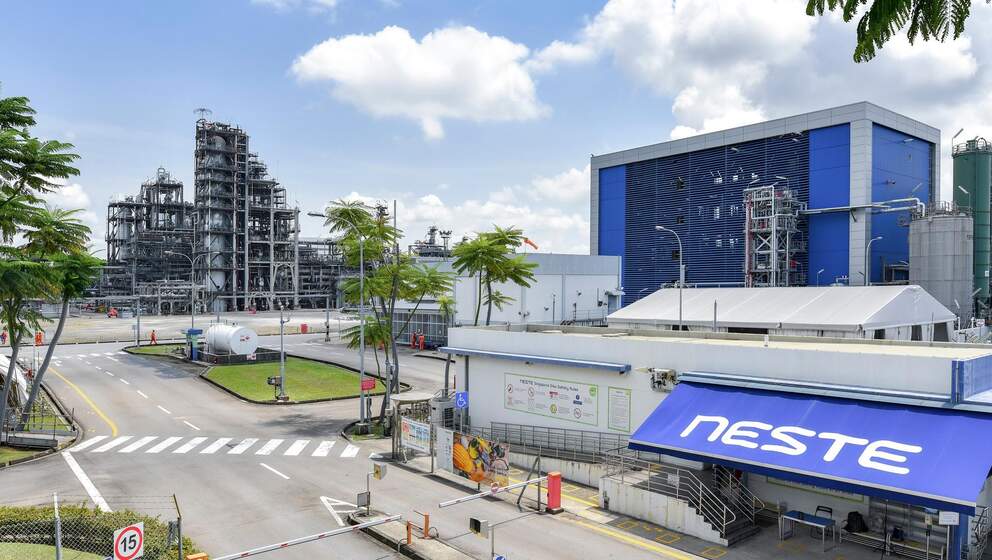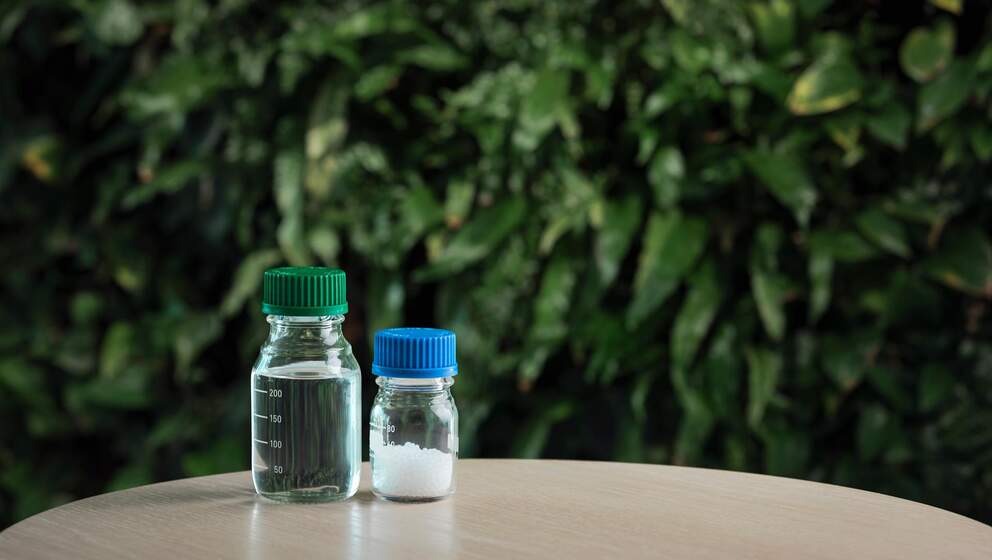Renewable Diesel Fuel Myths - Busted

Written by Jeremy Baines
If the predictions are correct, the Earth’s average temperature will increase up to 9 degrees (Fahrenheit) within the next century. What’s driving this? Human activity, namely burning fossil fuels [1], has been impacting our planet since the mid-19th century—and it’s causing changes at a catastrophic pace.
However, thanks to increased public awareness, education, and policies around climate change, the demand for clean energy sources is rising and spurring our current green revolution. From smarter home technologies to solar and wind power, and even advanced liquid fuels, clean, renewable energy sources are in high demand.
Renewable diesel fuel
A source of clean fuel, renewable diesel fuel is a premium-quality, non-petroleum hydrocarbon fuel made from 100 percent renewable raw materials.
Using waste from animal fats and vegetable oils, and turning them into renewable fuel sources, is still a misunderstood process despite its growing popularity over the last 15 years. As a result, several myths about using materials in this way have become canonized.
June 5 is World Environment Day—a day for encouraging worldwide awareness and action for the protection of our environment. In celebration of this, let’s take a look at the top misconceptions around using renewable diesel fuel and share some new information about the benefits of using it as an alternative fuel source for your business.
Myth #1: Renewable diesel fuel is the same as biodiesel—and has the same problems.
Renewable diesel, much like biodiesel, is sourced from waste agricultural and meat processing products, particularly vegetable oils and animal and fish fats. Although renewable diesel and biofuel are created from the same feedstocks, the two fuels use completely different production methods to reach their respective end result.
Biodiesel (B5-B20)
It is a non-hydrocarbon fuel with variability in source materials which can impact cold properties and the storage life of the final product. Biodiesel is produced by transesterification which uses methanol or ethanol, and catalysts, to turn the feedstock into methyl esters and glycerol. While it functions similarly to diesel, nothing in biodiesel is found in conventional or renewable diesel.
Some potential downsides are the possibilities that the end product contains soaps and metals, which harm injectors and other critical components. It also attracts water during the processing phases, subjecting it to microbial growth in storage and has poor cold temperature performance. Biodiesel also tends to accumulate and dilute motor oil. The shelf life is also short, with a maximum storage time of only six months.
Renewable diesel
It uses a number of different biomass-to-liquid processes, with hydrotreatment being the most common. In this procedure animal fat or vegetable oil is processed with hydrogen to remove oxygen and other elements which results in pure hydrocarbons. The resulting fuel is all of the good parts of conventional diesel without any of the impurities and a much smaller effect on the environment, leaving a fuel that has low odor, nearly zero sulfur and is cleaner-burning.
Renewable diesel can be used in high-level blends in existing heavy-duty diesel engines and doesn’t require any modification. Since it is also hydrogenated, it doesn’t contain oxygen, meaning fleets are not faced with the same cold weather, water attraction, and storage challenges that are seen when using biodiesel.
Every molecule in renewable diesel can be swapped into vehicles with no change in infrastructure and it meets ASTM-D975 standard for diesel fuel oils.
The key takeaway: Renewable diesel boasts the same engine performance as biodiesel but requires less system maintenance, offers a longer shelf life and produces less environmental impact.
Myth #2: It’s expensive
While there can be a small price difference when compared to traditional diesel, the difference amounts to cents instead of dollars.
In terms of infrastructure costs related to other “green” fuels, they are non-existent with renewable diesel fuel. Tanks, lines, fittings, and other components used with conventional diesel are completely compatible. Renewable diesel can also be found at the same stations used to fill up with regular diesel, so there is no need to install a new fuelling station or modify existing equipment ether.
The key takeaway: Renewable diesel is a high-value, high-quality fuel—with no added costs to current operations.
Myth #3: It’s not widely available
Commercial fleets like it because it’s an actionable way to reduce their carbon footprint and there’s less maintenance. Municipalities value it because of its sustainability. The volume and demand are there.
Neste, for example, recently delivered our one billionth gallon of Neste MY Renewable Diesel™ fuel into the U.S. That would not be possible without a number of operators, particularly in California, believing in the value of renewable diesel:
Sacramento County, Calif., began using renewable diesel in August 2016 in many of its heavy-duty vehicles, including more than 400 municipal public works trucks and specialty vehicles. The county estimated that it would reduce greenhouse gas emissions up to 80 percent by making the change.
The City and County of San Francisco switched to renewable diesel in 2015, reducing its fleet diesel greenhouse gas emissions by 50 percent.
Most recently, the Pasadena Fire Department has switched from operating on petroleum diesel to using Neste MY Renewable Diesel™ with plans to transition all remaining apparatus to renewable diesel by 2019.
The key takeaway: Renewable diesel fuel is not a niche product, and it is available and used in a wide variety of industries and applications.
Myth #4: The downtime is too long
Renewable diesel fuel is a clean-burning diesel that keeps fuel filters, particulate filters, and fuel injection systems cleaner and vehicles running efficiently. It doesn’t require the use of extra machinery or changes in infrastructure, so quite literally, you can pour it in without worry.
The key takeaway: It can be as simple as switching overnight so you can drop in and drive on.
If you’re looking to reduce your organization’s carbon footprint and positively contribute to improving urban air quality, consider making a switching to an alternative fuel source, such as Neste MY Renewable Diesel™—it’s an excellent alternative for powering commercial fleet trucks, city buses or school shuttles. With it, you can achieve up to an 80 percent reduction in greenhouse gas when compared to fossil diesel.
For more information about Neste MY Renewable Diesel™ Fuel or where to buy, please visit www.nesteMY.com.
Jeremy Baines is the vice president of sales for Neste U.S., Inc. Neste is proud to be ranked 2nd in the Global 100 list of the world’s most sustainable companies. For more information about Neste MY, visit NesteMY.com.

